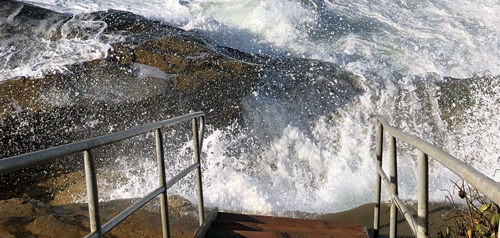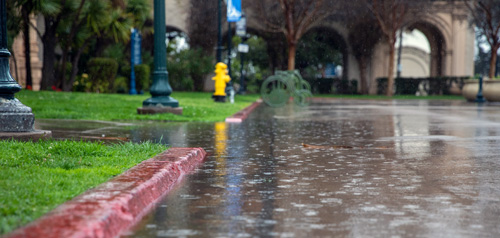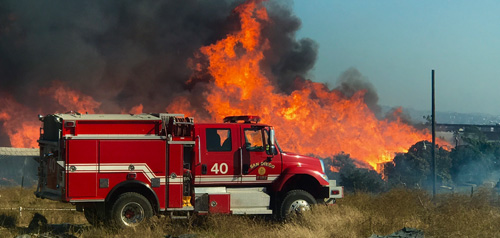Heat
What does science tell us?
San Diego is known for its pleasant temperatures; however, climate change will mean more hot days each year and the hottest days will get hotter and more frequent. By the 2040s, the average daily high could be 5 degrees Fahrenheit higher than it is now. By 2100, the number of heat wave days is projected to increase by 20% to 50%.
What is the City doing?
- Urban Heat Vulnerability Index - The City developed an Urban Heat Vulnerability Index that considers the vulnerability of communities to extreme heat events based on land use as well as social and health factors.
- Community Heat Mapping - The City, along with community partners and volunteers, completed a data collection campaign on a hot summer day to understand how urban heat varies across neighborhoods.
- Cool Zones - During period of extreme heat, the City activates certain recreation centers, libraries and other public buildings as places for San Diegans to stay cool.
What can you do?
Extreme heat is when the weather is much hotter than usual and sometimes more humid. In San Diego, extreme heat days currently occur when temperatures exceed 93.1 degrees. These days are projected to become hotter and more frequent in the future. Extreme heat can be dangerous, so it is important to be prepared. Children, older adults and people with chronic health conditions are especially vulnerable to the effects of extreme heat.
Steps you can take to prepare before an extreme heat event happens
- Learn how to recognize the signs of heat illness.
- Each spring, check that your household’s fans, air conditioners or other cooling equipment are in good working order.
- Cover your window with drapes or shades.
- Identify places in your community where you can go to get cool, such as the nearest Cool Zone or shopping mall.
How to stay safe during an extreme heat event
- Minimize direct exposure to the sun, and avoid high-energy activities or outdoor work, if possible.
- Stay hydrated by drinking water throughout the day. Avoid beverages with caffeine, sugar or alcohol.
- Wear loose-fitting, light-colored clothes. If you are outside, find shade, and wear a hat wide enough to protect your face.
- Watch for signs of heat illness, including heat cramps, heat exhaustion and heat stroke.
- Check the local news for health and safety updates.
- Check on family members, seniors and neighbors, and consider pet safety. If pets are outside, make sure they have plenty of cool water and access to shade.
- Take a cold shower or bath to help cool off.
- Use your fans or air conditioners or spend time in air-conditioned places.
- Use your oven less to help reduce the temperature in your home. Instead, eat light, cool and easy-to-digest foods such as fruit or salads.
Information on Preparing for Hot Days
- Explore Heat Ready CA to assess your risk and make a plan. Webpage available in English and Spanish.
- Center for Disease Control and Prevention: Extreme Heat Resources
- Ready.gov: Extreme Heat Resources
- California Department of Public Health: Extreme Heat Resources
- U.S. Environmental Protection Agency: Extreme Heat Resources





